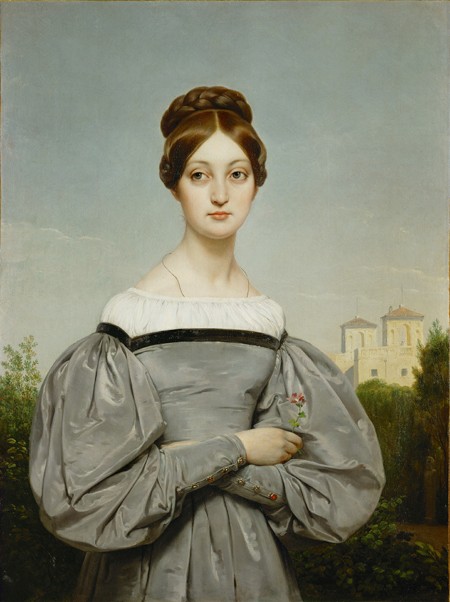This project investigates the visual representation of clothing in Europe in the nineteenth century, a period when its significance for art and its role within society underwent dramatic change. Against a background of shifting awareness of historical time, the material culture of modern dress came to be increasingly at odds with its visual representation in art: fashion epitomized the secular temporality of constant, rapid change, whereas art, in its more ambitious and monumental forms, sought to transcend alterations of time and embody enduring, moral values. At the same time, a flourishing culture of printed images pictured changes in the styles of clothes and an encyclopedic array of costumes (historical, regional, exotic, theatrical, and military), mediating between the cultures of fashion and of fine art. My project explores the tensions that emerged in art and art theory as a result of the rapid expansion of the cultures of fashion and costume in the later eighteenth and nineteenth centuries, eventually reaching a point where the ephemeral images of fashion and their temporality played a part in reshaping understandings of fine art.
To gain a deeper understanding of the imperatives driving visual representations of clothing in art, I conducted research on theoretical writings and practical manuals on art from the sixteenth through the nineteenth century focusing on the concepts of drapery, costume, and modern dress/fashion. Throughout most of this period, only the artistic rendering of drapery was taken seriously, and academic education taught artists to conceive clothing in terms of a classicizing norm. While the representation of modern dress in portraiture was pervasive, it was highly negotiated, for generally, art theory and criticism refused to countenance the aesthetic value of contemporary clothing and were suspicious of costume’s local color, despite the fact that artistic practice was increasingly taken up with representing figures in historicizing and exotic costume and modern dress.
Already in the late eighteenth century, drapery’s status as a universalizing convention for articulating the human body began to be challenged, partly because publications documenting the archaeology of Roman ruins in Italy heightened
The romantic period of the 1820s and 1830s is a particularly intriguing moment in the development of ideas about clothing the body in art. Writers and artists were ready to criticize the inadequacies of the neoclassical nude and the ugliness of modern dress without being able to articulate solutions or alternatives. Some critics saw the proliferation of historical, regional, and exotic costumes in paintings and prints as a response to the unease over depicting modern clothing. Images of modern dress and of historical costume reinforced each other by imposing a sense of fashionability onto the past, on the one hand, and in generating
By midcentury a new self-consciousness was developing, an awareness that the temporality of fashion played a significant role in art, as articulated most famously by Charles Baudelaire. Artists such as Édouard Manet and John Everett Millais began to engage in a serious way with the temporalities of historical costume and current fashion in their work, although many critics remained reluctant to accept the aesthetic potential of fashion in art, even in portraiture. A larger shift was taking place, reversing centuries of art-theoretical opinion that had privileged the supposedly timeless norms of classical drapery and, regardless of the priorities of artistic practice, had viewed the changing fashions of
